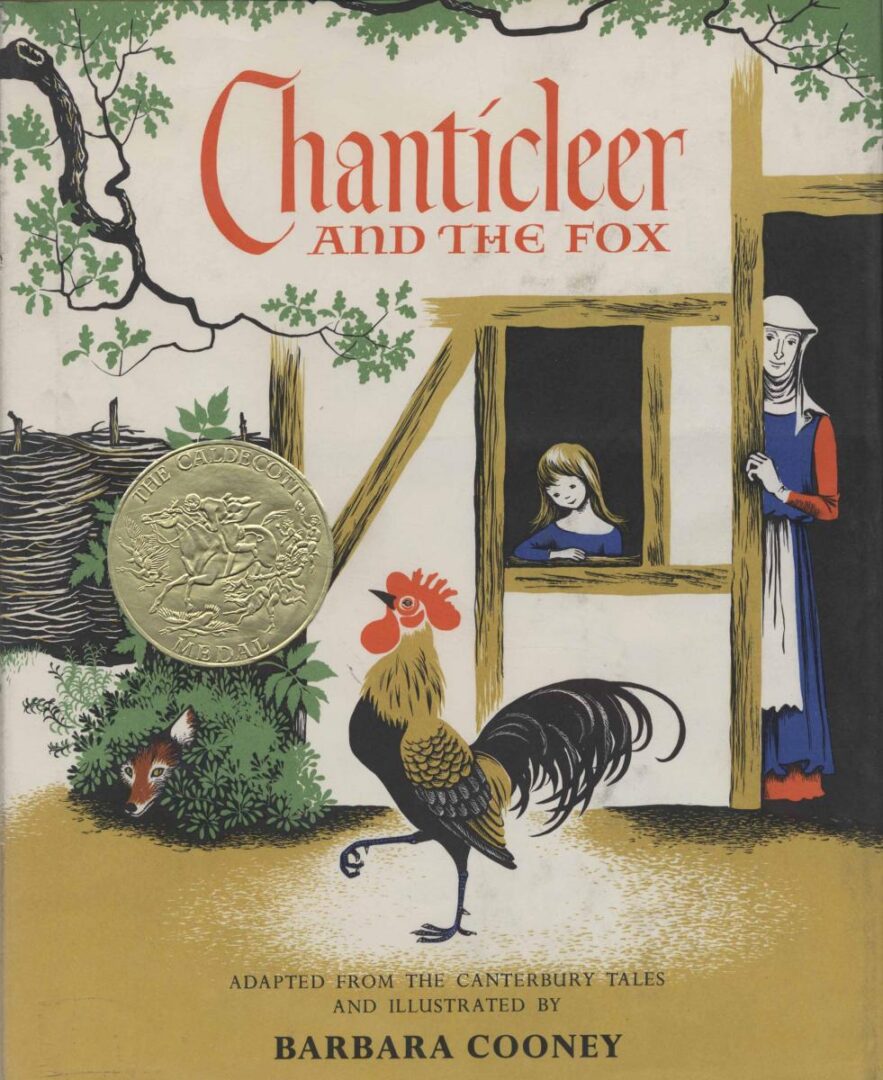



Way Back Wednesday Essential Classic
Chanticleer and the Fox
By Barbara Cooney
“Flattery looks like friendship, just like a wolf looks like a dog.” Remember that line please, for it provides a perfect introduction via this anonymous quote, to another essential classic in our Way Back Wednesday essential canon of picture book not to be missed classics.
Flattery is at the heart of Barbara Cooney’s Caldecott Award winning adaptation of “The Nun’s Priest’s Tale”, taken from Chaucer’s “The Canterbury Tales.”
Winning the award in 1959, the picture book tells the story of Chanticleer, a beautifully crowing, but proud cock and his nemesis, a wily, but ultimately outfoxed fox. Chanticleer, and his mate Partlet, are a lovey dovey duo, living on the farm of a poor, but hardworking widow with two young daughters.
Chanticleer has a very prophetic dream that his mate pooh poohs. He dreams of a
….beast like a hound which tried to grab my body and would have killed me. His color was between yellow and red, and his tail and both ears were tipped with black different from the rest of the fur
Hmmm. Now what sort of description does THAT fit, eh Partlet? But instead of comforting her partner, she calls him a coward and says, “Do not fear dreams.” Dear Partlet, tell that to Caesar, when his wife, Calpurnia (great name), warned him not to go to the Senate on the Ides of March. And we all know how THAT dream ended.
But this tale is not so much about dreams, but how flattery can get both Chanticleer and the fox in a spot where both use flattery to get what they want. Fortunately, for Chanticleer, they each want different things.
Barbara Cooney won a second Caldecott in 1980 for “Ox-Cart Man” and, who can ever forget the Lupine Lady, “Miss Rumphius?”
In “Chanticleer and the Fox”, Ms. Cooney elegantly employs a combination of color and black and white in her drawings to emphasize the intensity of the action, or a splash of color to set off more pastoral scenes.
Her descriptive passages and narrative draw young readers in, and her use of vocabulary is first rate.
I applaud picture books such as “Chanticleer and the Fox.” They are excellent both in storytelling, art and they believe their audiences to be up to the challenge of this type of book and never water things down too much.
May I say that they, in a way, “flatter” the reader in a good way? They believe young readers are up for it. And they are; if we, as adults, believe it too!
